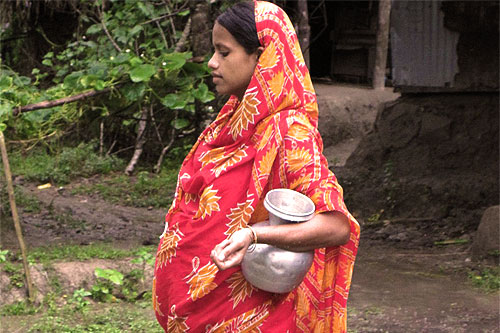
Child brides being beaten by their husbands will no longer be included in India’s biggest survey of domestic violence – potentially hiding the problem and making it even harder for married girls to get help.
India’s national health survey is a mine of statistics on key social indicators – from fertility rates to immunisation, marriage age to gender-based violence, and is used to craft government policies and pinpoint charity spending.
But (girls) brides married before the legal age of 18 have been omitted from the latest survey due to new child protection laws – even after the previous report found nearly one in six married girls aged 15 to 19 had faced abuse.
“Studies have shown that many experience violence in the first year of marriage … now their story won’t get highlighted,” said K.G Santhya, senior associate with the nonprofit Population Council.
“What gets measure gets acted on … there’s no evidence now to talk about their experience of this violence,” Santhya added.
Early marriage heightens the risk of domestic slavery, spousal violence and poor health with girls married under the age of 15 almost 50% more likely to have experienced either physical or sexual intimate partner violence, campaigners say.
India accounts for more than 20% of the world’s adolescent population and the highest number of child marriages in South Asia, according to the U.N. children’s agency (UNICEF).
India began asking questions about domestic abuse as part of the national health survey in 2005-06, after the country’s Domestic Violence Act was passed.
Since then, the research has shined a light on a largely hidden form of violence against women and revealed that few women go to the police to report abusive husbands.
“We use the survey in our campaigns, on our pamphlets and to hold orientations (of grassroots workers). This is authentic data, there is no other similar survey in the country,” said Venkat Reddy of child rights non-profit MV Foundation.
THE SURVEY
Officials said they dropped the under-18 age group because the survey’s confidentiality clause was at odds with India’s child protection law of 2012, which demands that all cases of child sex abuse must reported to the police.
The survey requires researchers to conduct the interviews in private over a few days. Until the last survey, women and girls were asked if they had ever been slapped, punched, kicked or forced into sex by their husbands.
S.K. Singh, professor at the International Institute for Population Sciences, which conducts the survey, said they had no choice but to exclude the under-18s from future interviews in light of the new child protection rules.
“As per our ethical protocol, we’re committed that whatever information we get is kept confidential and not shared with anyone. That’s why there was a huge dilemma before us,” he told the Thomson Reuters Foundation.
“So we came to this conclusion that if we take 18 plus, our ethical issues are protected in the context of the Protection of Children from Sexual Offences Act. There’s no other option.”
The health ministry did not respond to requests for comment.
Campaigners said excluding 15 to 18-year-olds from the survey’s domestic violence chapter was distorting statistics.
“States are showing a drop in domestic violence cases and it needs to be understood that an entire vulnerable population was not asked about it,” said Padma Deosthali, a health rights campaigner.
Fourteen of 20 states whose survey reports were published have shown a decline in domestic violence cases, data reviewed by the Thomson Reuters Foundation shows.
Most child marriages are reported in rural communities that often consider verbal abuse or a child being slapped in her marital home as reactions to disobedience on her part, campaigners said.
Only 14% women who suffered domestic violence sought help from the police, and of them only 3% reached out to the police, the health survey data shows.
“These girls lack the support to report the matter to the police as they ask for a family elder to accompany them. Schools do not have an enabling environment for adolescents to discuss these matter,” said Indira Pancholi, founder of women’s rights non-profit Mahila Jan Adhikar Samiti in Rajasthan.
“Dropping this data on them is a mistake. These girls have no voice,” she said.

